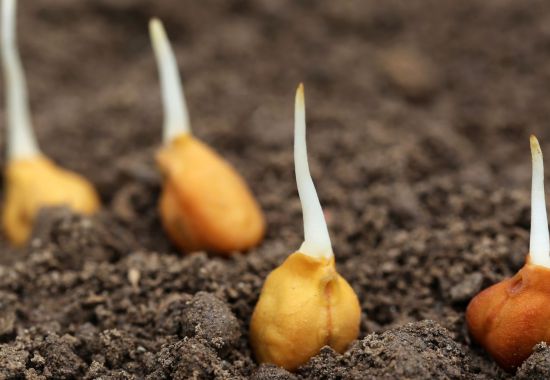Description
The chickpea is an annual plant of an approximate height of 40cm. Its leaves are odd-pinnate and without tendrils, with serrated leaflets and white or bluish flowers in axillary racemes. Its fruit is ovoid and contains one or two seeds.
In Spain There are approximately 70,000 hectares of chickpea cultivated, producing more than 91,000 tons of chickpea annually. It is one of the most widespread grain legume crops in Spain.

Soil
Prefers deep, clay soils without gypsum, and that gypsum decreases the quality of the cultivated chickpea. Chickpea is sensitive to salinity and needs well aerated soil to grow optimally.
PH
Salinity
Quality
Temperature
Chickpea can germinate from 10ºC, but its optimum germination temperature is between 25 and 35ºC.
Irrigation
Chickpea is a typical rainfed plant, so its water needs are very low. Throughout the crop cycle, two to four waterings will be given, starting after the cold and giving the last watering before the grain or pea begins to grow.
Irrigation properties
Varieties
The most important Spanish chickpea varieties are the Castellano, Fuentesaúco, Pedrosillano, Escacena, Chamad and Carriol. Every one is indigenous to its region and has various physiological characteristics that adapt it to its environment.